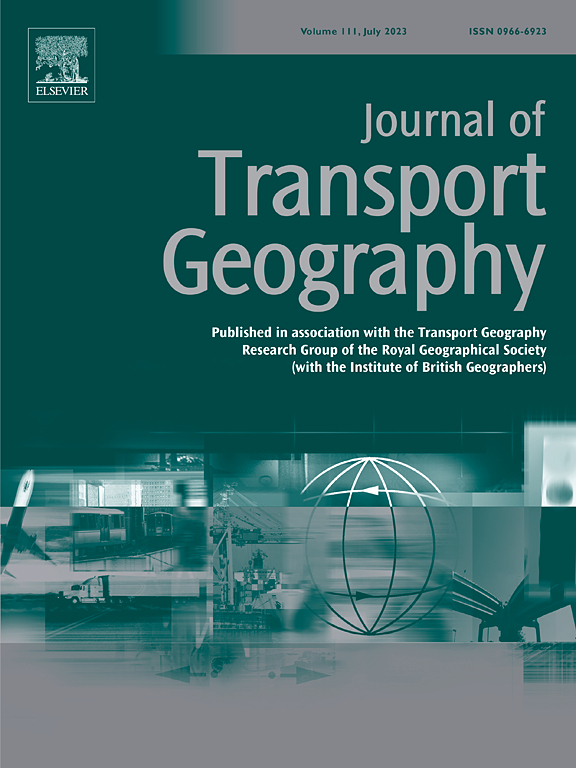改善停车条件:来自杭州停车场利用分析的启示
IF 5.7
2区 工程技术
Q1 ECONOMICS
引用次数: 0
摘要
泊车设施是泊车规划及管理的重点。由于担心停车位短缺,政策制定者和停车从业人员经常过度供应停车位,导致分配效率低下和缺乏战略。人们对现有停车位的使用情况以及影响其使用的因素了解有限。过去的大多数研究都集中在住宅或街道上的停车,而对与旅行相关的停车,特别是停车场层面的停车,研究不足。本研究分析了中国杭州2592个公共停车场超过70万个停车位的数据,以评估停车利用率并探讨影响因素。该研究利用先进的机器学习技术,包括XGBoost和SHAP值,研究了停车场利用率与停车场属性、土地利用、城市可达性和出行因素等因素之间的非线性关系。结果表明,杭州市停车场供过于求现象明显,工作日停车场平均利用率为0.57,非工作日停车场平均利用率为0.48。56%的泊车位在工作天仍未使用,78.2%的泊车位供过于求(使用率低于0.85)。SHAP分析表明,小规模地块的利用率高于大规模地块。土地利用异质性导致土地利用差异显著;设施聚集提高了利用率,而高土地利用组合和良好的公共交通可达性则降低了利用率。鉴于观察到大量未使用的停车位,本研究强调需要在城市中制定更好的停车规定政策。研究结果为改善停车供应和促进可持续的城市停车市场提供了政策启示。本文章由计算机程序翻译,如有差异,请以英文原文为准。
Towards better parking provision: Insights from parking lot utilization analysis of Hangzhou, China
Parking provision is a key concern in parking planning and management. Policymakers and parking practitioners often over-supply parking due to fears of shortages, leading to inefficient and unstrategic allocation. There is limited understanding of how many existing parking spaces are used and what factors affect their use. Most past research has focused on residential or on-street parking, leaving travel-related parking, especially at the parking lot level, understudied. This study analyzes data from 2592 public parking lots with over 700,000 spaces in Hangzhou, China, to assess parking utilization and explore influencing factors. Using advanced machine learning techniques, including XGBoost and SHAP values, the study investigates nonlinear relationships between parking utilization and factors such as parking lot attributes, land use, urban accessibility, and trip factors. Results reveal a significant oversupply of parking in Hangzhou, with average parking lot utilization rates of 0.57 on workdays and 0.48 on non-workdays. 56 % of parking spaces remain unused during workdays, and 78.2 % of parking lots are oversupplied (utilization rate below 0.85). SHAP analysis shows that small-scale lots have higher utilization rates compared to large-scale ones. Heterogeneous land use leads to significant differences in utilization; facility aggregation increases utilization, while a high land use mix and good public transportation accessibility reduce it. Given the substantial amount of unused parking observed, this study emphasizes the need for better parking provision policies in cities. The findings offer policy implications for improving parking provision and promoting a sustainable urban parking market.
求助全文
通过发布文献求助,成功后即可免费获取论文全文。
去求助
来源期刊

Journal of Transport Geography
Multiple-
CiteScore
11.50
自引率
11.50%
发文量
197
期刊介绍:
A major resurgence has occurred in transport geography in the wake of political and policy changes, huge transport infrastructure projects and responses to urban traffic congestion. The Journal of Transport Geography provides a central focus for developments in this rapidly expanding sub-discipline.
 求助内容:
求助内容: 应助结果提醒方式:
应助结果提醒方式:


